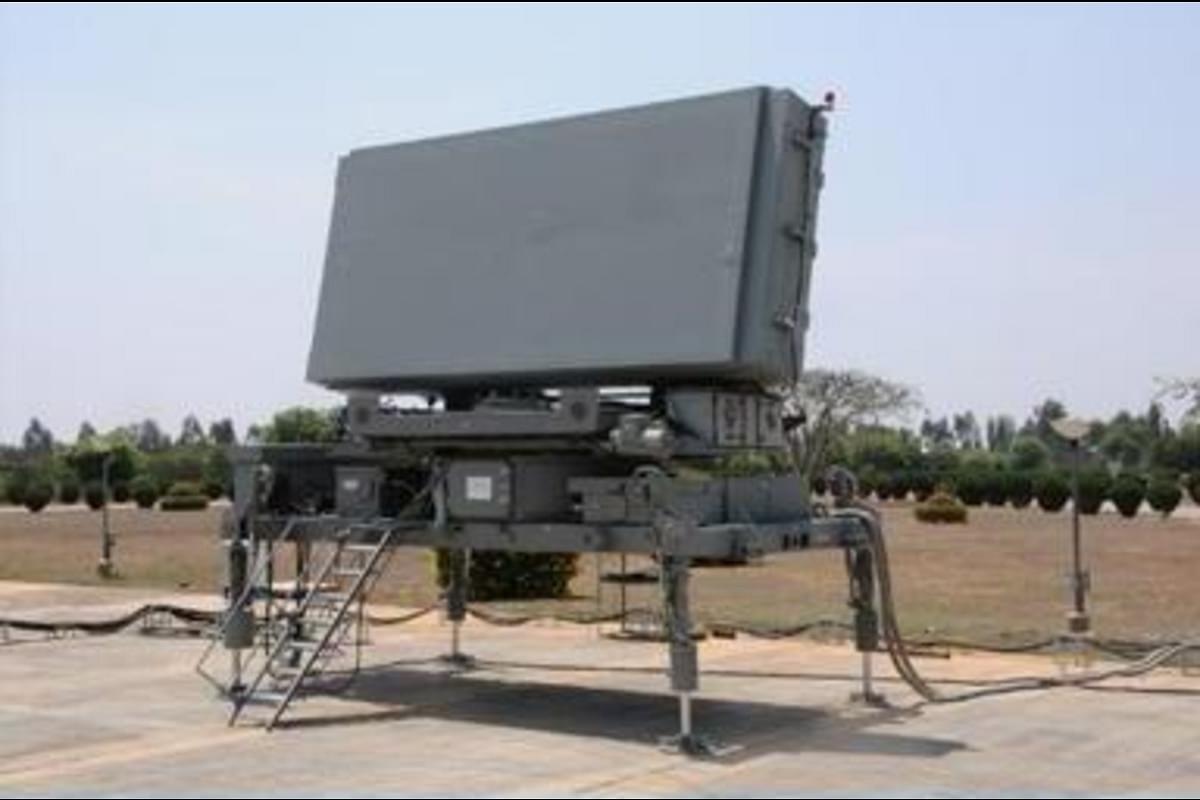




Disclaimer: Copyright infringement not intended.
Context: The Indian Ministry of Defence (MoD) has signed a contract with Bharat Electronics Limited (BEL) for buying Arudhra radar and DR-118 RWR worth Rs 3,700 Crore for Indian Air Force (IAF).
Details:
About Arudha Radar:
Range: The system has an instrumented range of 400 Km and is able to detect 2sqm RCS targets as far as 300 Km in range with altitude coverage from 100 meters to 30 Kms.
Operating mode: The radar operates either in Staring or Rotation Mode.
Technologies: The following are the technologies established as part of ARUDHRA radar and it has spin-off for all future similar class of radar projects of LRDE.
Application Areas:
What is a Radar System?
The working of radar: it transmits electromagnetic energy in the direction of targets to observe the echoes and returns from them. Here the targets are nothing but ships, aircraft, astronomical bodies, automotive vehicles, spacecraft, rain, birds, insects, etc. Instead of noticing the target’s location and velocity, it also obtains their shape and size sometimes.
The main objective of radar: to discover faraway targets under difficult climate conditions & determines their distance, range, through precision.
Working Principle: The radar working principle is very simple because it transmits electromagnetic power as well as examines the energy returned back to the target. If the returned signals are received again at the position of their source, then an obstacle is in the transmission way. This is the working principle of radar.
Fundamentals of Radar:
|
The Doppler effect or Doppler shift is the apparent change in frequency of a wave in relation to an observer moving relative to the wave source. It is named after the Austrian physicist Christian Doppler, who described the phenomenon in 1842. |
The essential parts of this system include the following:
Types of Radar:
Bistatic Radar: This type of radar system includes a Tx-transmitter & an Rx- receiver that is divided through a distance that is equivalent to the distance of the estimated object. The transmitter & the receiver are situated at a similar position is called a monastic radar whereas the very long-range surface to air & air to air military hardware uses the bistatic radar.
Doppler Radar: It is a special type of radar that uses the Doppler Effect to generate data velocity regarding a target at a particular distance.
Monopulse Radar: This kind of radar system compares the obtained signal using a particular radar pulse next to it by contrasting the signal as observed in numerous directions otherwise polarizations.
Passive Radar: This kind of radar is mainly designed to notice as well as follow the targets through processing indications from illumination within the surroundings. These sources comprise communication signals as well as commercial broadcasts.
Instrumentation Radar: These radars are designed for testing aircraft, missiles, rockets, etc. They give different information including space, position, and time both in the analysis of post-processing & real-time.
Weather Radars: These are used to detect the direction and weather by using radio signals through circular or horizontal polarization.
Mapping Radar: These radars are mainly used to examine a large geographical area for the applications of remote sensing & geography.
Navigational Radars: Generally, these are the same to search radars but, they available with small wavelengths that are capable of replicating from the ground & from stones. These are commonly used on commercial ships as well as long-distance airplanes.
Pulsed RADAR: Pulsed RADAR sends high power and high-frequency pulses towards the target object. It then waits for the echo signal from the object before another pulse is sent. The range and resolution of the RADAR depend on the pulse repetition frequency. It uses the Doppler shift method.
Pulse-Doppler: It transmits high pulse repetition frequency to avoid Doppler ambiguities.
Moving Target Indicator: It transmits low pulse repetition frequency to avoid range ambiguities. In an MTI RADAR system, the received echo signals from the object are directed towards the mixer, where they are mixed with the signal from a stable local oscillator (STALO) to produce the IF signal.
Continuous Wave: The continuous wave RADAR doesn’t measure the range of the target but rather the rate of change of range by measuring the Doppler shift of the return signal.
Applications:
Military:
Air Traffic Control:
Remote Sensing: It can be used for observing whether or observing planetary positions and monitoring sea ice to ensure a smooth route for ships.
Ground Traffic Control: It can also be used by traffic police to determine the speed of the vehicle, controlling the movement of vehicles by giving warnings about the presence of other vehicles or any other obstacles behind them.
Space:
|
PRACTICE QUESTION Q) What do you mean by the term Radar? What are its various applications? (150 words) |











© 2025 iasgyan. All right reserved